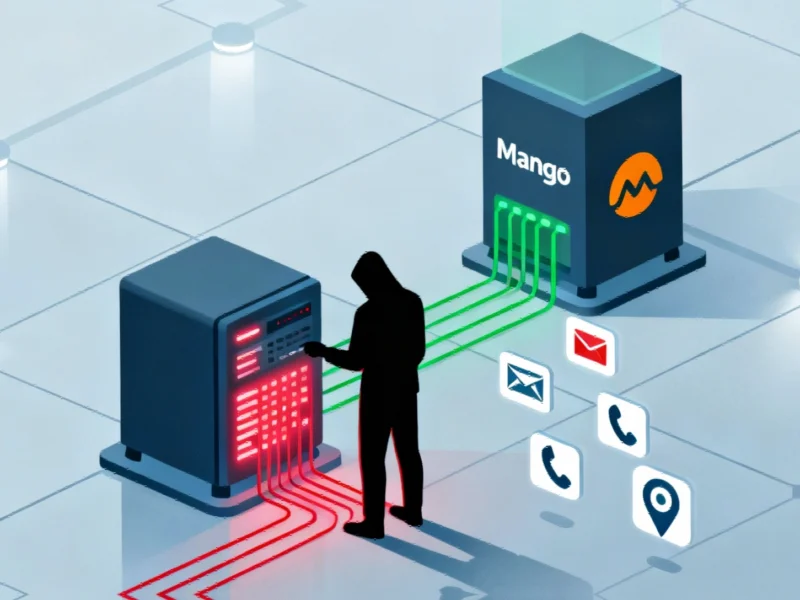Note: Featured image is for illustrative purposes only and does not represent any specific product, service, or entity mentioned in this article.
Ransomware Crisis Deepens Across Global Industries
The third quarter of 2025 has delivered sobering news for cybersecurity professionals worldwide, with ransomware attacks reaching unprecedented levels. According to the latest BlackFog State of Ransomware Report, publicly disclosed incidents surged to 270 cases—representing a staggering 36% year-over-year increase and a 335% escalation since Q3 2020. The attacks spanned 93 countries, affecting everything from major airlines to manufacturing facilities, with operational disruptions costing organizations millions in recovery expenses and lost productivity.
Unprecedented Attack Volume and Sophistication
BlackFog’s comprehensive analysis reveals a consistently escalating threat landscape throughout the quarter. July recorded 96 attacks (50% YoY increase), August saw 92 incidents (37% rise), and September maintained the pattern with 85 attacks (27% growth). Dr. Darren Williams, BlackFog’s Founder and CEO, emphasized the severity: “This has been a quarter in which the fallout of cyberattacks has continued to have a long and lasting impact. From grounded aircraft and stranded passengers to manufacturers forced to halt production, the disruption has been significant.”
The manufacturing sector bore the brunt of undisclosed attacks at 22% of all incidents, while healthcare remained the most targeted industry among disclosed cases with 86 attacks (32% of total). The services sector followed with 333 incidents, and construction entered the top three for the first time with 143 attacks. These industry developments demonstrate attackers’ evolving strategies toward critical infrastructure sectors.
Emerging Threat Actors and Attack Methods
Between July and September, 54 ransomware groups were active, with the Qilin collective leading at 20 confirmed attacks. Notably, 18 new ransomware groups emerged during the quarter, including newcomer DEVMAN, which conducted 19 attacks across multiple continents—including a record $91 million ransom demand against China’s Shimao Group. Approximately 40% of reported incidents remain unattributed to any specific group, highlighting the challenges in cybersecurity attribution.
Data theft remained the primary attack vector, featuring in 96% of disclosed incidents—an all-time high. This shift toward comprehensive data exfiltration represents a significant evolution in ransomware tactics beyond simple encryption. Organizations must stay informed about recent technology solutions that can help combat these sophisticated threats.
The Hidden Iceberg: Underreported Incidents
Perhaps most alarming is the revelation that nearly 85% of all ransomware incidents—estimated at 1,510 cases—went unreported in Q3 2025. This represents a 21% increase in unreported cases compared to 2024. Qilin dominated this undisclosed segment as well, accounting for 16% of such cases. The disparity between public disclosures and actual incidents suggests the true scale of the ransomware epidemic may be substantially larger than official statistics indicate.
As security professionals work to address these challenges, they’re also monitoring related innovations in defensive technologies that could help close security gaps exploited by ransomware groups.
Cross-Industry Impact and Response Strategies
The automotive sector experienced significant disruption, with Jaguar Land Rover operations only recently resuming following an August incident. Meanwhile, numerous smaller suppliers continue dealing with the aftermath. In a concerning development, attackers demonstrated increasing ruthlessness by targeting a UK nursery chain, Kido, compromising sensitive information about children, parents, and caregivers.
Dr. Williams advised organizations: “As ransomware volumes show a continued upward trend, the best option for organizations is to make it as hard as possible for cybercriminals to take advantage of them. That means protecting data so that they have no leverage for extortion and, critically, no incentive to return.” This approach aligns with broader market trends toward comprehensive data protection rather than reactive security measures.
Future Outlook and Protective Measures
The ransomware landscape shows no signs of improvement, with attacks becoming both more frequent and more sophisticated. Security experts emphasize the need for multi-layered defense strategies including robust backup systems, employee training, network segmentation, and advanced threat detection. As organizations consider their security posture, many are evaluating how Microsoft’s AI-first Windows strategy might influence their defensive capabilities against evolving threats.
Meanwhile, the security community continues to analyze the implications of these attacks within the broader context of digital transformation. The parallel developments in enterprise technology, including Windows 11’s AI transformation, present both new security challenges and potential defensive advantages that organizations must carefully balance.
As the ransomware crisis continues to evolve, organizations across all sectors must prioritize cybersecurity investments and incident response planning. The dramatic increase in attacks during Q3 2025 serves as a stark reminder that no organization is immune, and comprehensive protection strategies are no longer optional but essential for business continuity.
This article aggregates information from publicly available sources. All trademarks and copyrights belong to their respective owners.



